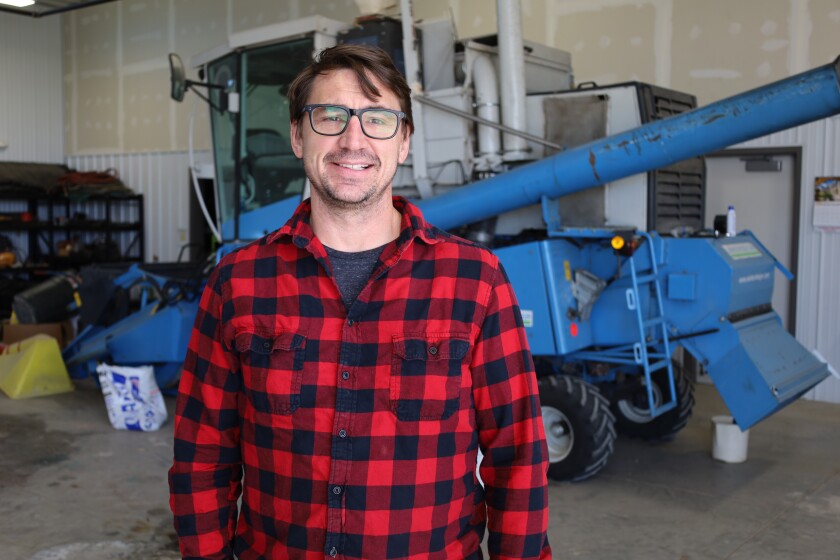STURGIS, S.D. — When farming in South Dakota, conditions vary between East River and West River farms. That’s why it’s important to be conducting research on both sides of the state to ensure that producers everywhere have the resources they need to successfully run their operations.
There was a need for more aid and resources for ag producers in western South Dakota. With South Dakota State University’s main campus being in Brookings, most of the projects happening there were heavily focused on eastern South Dakota practices. They had the Cottonwood Research Station, but that facility is dedicated to rangeland and livestock research. SDSU had no crop research farm in the western part of the state.
In 2019, that changed. The university started farming and conducting research at their West River Research Farm. The farm consists of around 110 acres of land near Sturgis, South Dakota. And there are a lot of different projects that take place on these acres.
Ariana Schumacher / Agweek
“My background is in soil science,” said Chris Graham, manager of the SDSU West River Research Farm. “We do a lot of soil microbiology, soil health, but we also focus on the interactions with crops and soils. We do a lot with small grains, pulse crops like peas and lentils, and then we do rotation work where we try to bring in various livestock.”
The farm brings in cattle to graze cover crops and this year they will also have sheep on the operation.
ADVERTISEMENT
“So, we are looking at a lot of these interactions with the livestock and the crops and how that affects soil and soil health,” Graham said.
This year, they are converting a portion of the research farm to test organic, regenerative practices, like livestock integration, forages and organic grain production. They look at nitrogen and carbon sequestration.
“We are looking at how nitrogen additions affect the carbon in the soil,” Graham said. “We are tracing the nitrogen through the soil and through the plant to see where it ends up in the plant, how the microbes in the soil affect those different fertilizers.”
Other projects happening this year includes precision ag research and drone work.
“We are looking at these different basically weed control methods, like mowing between the rows, and then we are looking at how these things of course affect the soil microbiome, so how does it change the microbes and the different bugs in the soil, what happens when you start to integrate these things,” Graham explained.
Ariana Schumacher / Agweek
They also have variety trials on the operation.
“We use that information to distribute to farmers, so they know what sort of varieties work in their area,” Graham said.
Farmers in the western part of the state face different challenges than those producing crops east of the river.
ADVERTISEMENT
“There are different farming practices, but really the biggest reason that is is because there’s a different precipitation regime out here. It’s much drier than east, so we face different challenges,” Graham said. “We have the hills here in the west, we get a lot of hail and a lot of these different storms and things.”
Having small research farms are a great way to see if practices or certain crops will be able to work for larger farmers in the area.
“We are not too big to fail. We can take on lots of risky projects,” Graham said. “We do some very off the wall or unexpected crops. One, for example, that didn’t work was, we tried quinoa. We have the ability because sometimes get the farmers that say, ‘Hey there’s some new market of some new crop, how does it grow here?’ So we can try those things and we can kind of troubleshoot and we can workshop some of these things for farmers, so they don’t have to waste their time and real dollars doing that stuff.”
Ariana Schumacher / Agweek
Graham says the research facility also has been a great way to interact with other farmers in the area and connect the community with their research.
“This being the vocal point of where people can come, we have a lot of field days,” he said. “We have 4-H, we have youth programs. It really gives us a permanent spot that we can bring groups out and they can come, and they can see these things in the field, see it in practice, which I think is really critical.”




